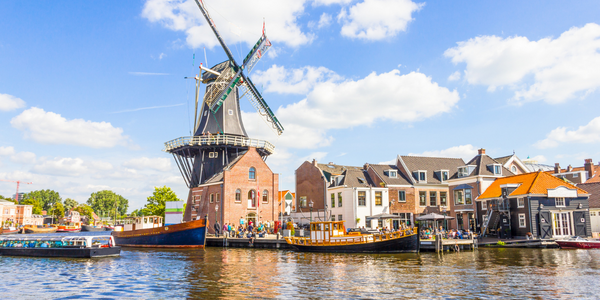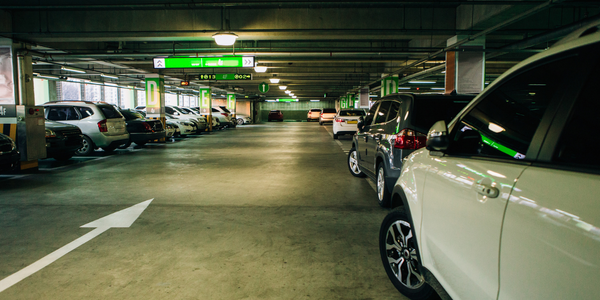Customer Company Size
Large Corporate
Region
- America
Country
- United States
Product
- AssetWorks Enterprise Asset Management (EAM)
Tech Stack
- Asset Management Software
Implementation Scale
- Enterprise-wide Deployment
Impact Metrics
- Productivity Improvements
- Digital Expertise
Technology Category
- Functional Applications - Enterprise Asset Management Systems (EAM)
Applicable Industries
- Cities & Municipalities
Applicable Functions
- Facility Management
Use Cases
- Remote Asset Management
Services
- System Integration
- Software Design & Engineering Services
About The Customer
Seattle Parks and Recreation (SPR) is a department of the city of Seattle, Washington, responsible for managing the city's park system. The park system spans 6,200 acres and includes over 400 parks and natural areas, making up about 11% of the city's total land area. The system also includes 25 miles of boulevards and 120 miles of trails, as well as athletic fields, children's play areas, gardens, and facilities like community centers, swimming pools, and environmental learning centers. SPR provides countless opportunities for Seattleites of all ages to play, learn, contemplate, and build community. One of SPR's primary roles is to manage and maintain the thousands of assets within the city's extensive park system.
The Challenge
Seattle Parks and Recreation (SPR) manages the city's extensive park system, which includes over 400 parks and natural areas. One of SPR's primary roles is to manage and maintain the thousands of assets within the park system. However, the department had been using separate work order and asset management systems that were not integrated, leading to duplicate work, inefficient data collection, and other issues. SPR believed that an integrated asset management software system would improve efficiencies, maintenance tracking, and data quality. During the Request for Proposal (RFP) process, SPR had clear requirements for an asset management software solution, including ease of navigation for staff, meeting reporting needs, integration with certain existing systems, and configurability.
The Solution
After the RFP process, SPR concluded that AssetWorks Enterprise Asset Management (EAM) software solution would be the best fit for the department. AssetWorks EAM is a comprehensive asset management system designed to handle all aspects of public infrastructure management, including complex networks of linear and boundary-based assets. The software was chosen for its manageability and ease of use from both an end-user's and a system administrator's perspective. The AssetWorks team's attention to detail and genuine interest in their clients' success also impressed SPR. With AssetWorks EAM, SPR can rely on one system to manage their many assets. The software allows workers to track their hours and tasks on tablets in the field, improving their paper-based system of collecting data. SPR is also planning to implement the Capital Planning Module, one of AssetWorks' newest products, in early 2017.
Operational Impact

Case Study missing?
Start adding your own!
Register with your work email and create a new case study profile for your business.
Related Case Studies.

Case Study
Turning A Stadium Into A Smart Building
Honeywell created what it called the “intelligent system” for the National Stadium in Beijing, China, turning the venue for the opening and closing events at the 2008 Summer Olympics into a “smart building.” Designed by highly controversial artist Ai Weiwei, the “Bird’s Nest” remains one of the most impressive feats of stadium architecture in the world. The 250,000 square meter structure housed more than 100,000 athletes and spectators at a time. To accommodate such capacity, China turned to Honeywell’s EBI Integrated Building Management System to create an integrated “intelligent system” for improved building security, safety and energy efficiency.
.png)
Case Study
Smart Street Light Network (Copenhagen)
Key stakeholders are taking a comprehensive approach to rethinking smart city innovation. City leaders have collaborated through partnerships involving government, research institutions and solution providers. The Copenhagen Solutions Lab is one of the leading organizations at the forefront of this movement. By bringing together manufacturers with municipal buyers, the Copenhagen Solutions Lab has catalyzed the development and deployment of next-generation smart city innovations. Copenhagen is leveraging this unique approach to accelerate the implementation of smart city solutions. One of the primary focus areas is LED street lighting.

Case Study
Buoy Status Monitoring with LoRa
The Netherlands are well-known for their inland waterways, canals, sluices and of course port activities. The Dutch Ministry of Infrastructure indicates that there are thousands of buoys and fixed items in and near water environments that would profit from IoT monitoring. One of the problems with buoys for example, is that they get hit by ships and the anchor cable breaks. Without connectivity, it takes quite some time to find out that something has happened with that buoy. Not to mention the costs of renting a boat to go to the buoy to fix it. Another important issue, is that there is no real-time monitoring of the buoys at this moment. Only by physically visiting the object on the water, one gains insight in its status.

Case Study
Barcelona Case Study
Barcelona’s heavy traffic and its associated high levels of pollution were the primary factors that motivated some companies and universities to work on strategies for improving traffic in the city centre. Bitcarrier is one of the technologies involved in the In4Mo Project, whose main objective is to develop the applications that form the core of smart mobility, one of the fundamental pillars of the smart city concept.

Case Study
China Mobile Smart Parking
Smart Parking, powered by NB-IoT technology, is making it easier for drivers to find free parking spots. Cities can better manage their parking assets and maximize the revenue available to them as a result. Drivers searching for parking create congestion and pollution by circling and hunting for available parking. Smart Parking services are able to significantly ease these problems by guiding a driver directly to a parking space.








